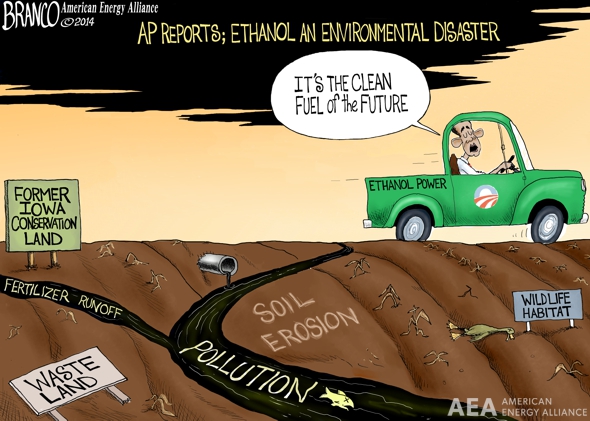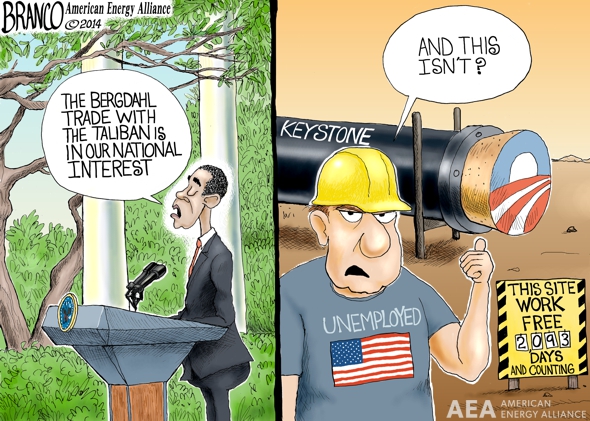The EPA is proposing to lower the 2014 RFS biofuel blending mandate by 1.4 billion gallons, from the statutory mandate of 18.21 billion gallons to 15.21 billion gallons. While a study by the Environmental Working Group (EWG) concluded that reducing the biofuel target would reduce emissions by the equivalent of taking 580,000 cars off the road,[i] a study conducted by Biotechnology Industry Corporation found that reducing the target would add greenhouse gas emissions equivalent to placing 5.9 million more cars on the road.[ii] So which is it? Does ethanol reduce or increase carbon dioxide emissions? After years of research, the answer is still not clear.
This latest research suggests that the impact on carbon dioxide emissions of using biofuels over petroleum-based fuel is unclear, primarily due to uncertainties in modeling biofuel emissions associated with life cycle production and land use changes.[iii]
Four years ago, when the EPA wrote its final rule on the RFS and released its Regulatory Impact Assessment in 2010, there was little doubt that biofuels produced lower greenhouse gas emissions than gasoline. The Impact Assessment predicted that corn ethanol’s emissions would be 17 percent lower than gasoline’s by 2022. By setting thresholds that require a certain amount of biofuels to be blended into transportation fuel each year, the EPA sought to cut emissions by 20 percent using corn ethanol and 50 percent using advanced biofuels.[iv]
However, studies today have resulted in a variety of conclusions that both question and confirm the original belief that the RFS would help reduce greenhouse gas emissions. The EWG report produced this past May concluded that the EPA proposal to cut the 2014 RFS target by 1.4 billion gallons would actually lower U.S. greenhouse gas emissions by 3 million tons of carbon dioxide. EWG concluded that previous estimates and models dramatically underestimated carbon emissions associated with land changes—plowing grasslands and wetlands to turn into corn fields for biofuel production—which release carbon locked up in trees and soil into the atmosphere. Therefore, EWG suggests that by taking the full life cycle of biofuel production, transmission, and tailpipe emission into account, biofuels release more carbon dioxide into the air than gasoline.[v]
In response to EWG’s study, a group of seven scientists conducted their own research, and came to similar conclusions as the ones produced by the Biotechnology Industry Corporation. The reports suggested that EWG’s models both exaggerate the total amount of land that has been converted into corn ethanol production and overestimate the carbon released from such land changes.[vi] They therefore concluded that reducing the 2014 RFS biofuel mandate would increase greenhouse gas emissions, because even after accounting for the life cycle of biofuel production corn ethanol still reduces emissions by about 30 percent compared to petroleum-based fuel.[vii]
When the RFS was created, there was great confidence that domestic oil production would continue to fall, that cellulosic ethanol would quickly become cost competitive, and that using more ethanol would reduce greenhouse gas emissions. Today, domestic oil production is booming, cellulosic ethanol production is almost non-existent, and it now isn’t clear whether ethanol reduces carbon dioxide emissions. Questions surrounding biofuel life cycle emissions and the impact of land changes make it difficult to definitively conclude whether biofuel or petroleum-based fuel produces less carbon dioxide emissions. This is a good reminder of the folly of mandates—politicians understand far less of the world than they think they do.
[i] Environmental Working Group, Ethanol’s Broken Promise, May 29, 2014, http://www.ewg.org/research/ethanols-broken-promise.
[ii] Amanda Peterka, RFS proposal would reduce greenhouse gas emissions- enviro report, Greenwire, May 29, 2014, http://www.eenews.net/greenwire/stories/1060000375/.
[iii] Amanda Peterka, DOE-backed study questions life-cycle analyses of carbon footprint, Greenwire, http://www.eenews.net/greenwire/stories/1059987911/.
[iv] Environmental Working Group, Ethanol’s Broken Promise, May 2014, http://static.ewg.org/reports/2014/ethanol_broken_promise/pdf/ethanol_broken_promise_ewg_2014.pdf.
[v] ibid
[vi] Michael Wang, Jennifer B. Dunn, Steffen Mueller, Zhangcia Qin, Wally Tyner, Barry Goodwin, Comments on Ethanol’s Broken Promise by the Environmental Working Group (May 2014), June 11, 2014, http://ethanolrfa.3cdn.net/c9820f88366b2d2b3f_ykm6bnsvc.pdf.
[vii] Amanda Peterka, Industry Group says EPA proposal will increase GHG emissions, Greenwire, March 26, http://www.eenews.net/greenwire/stories/1059996767/.






